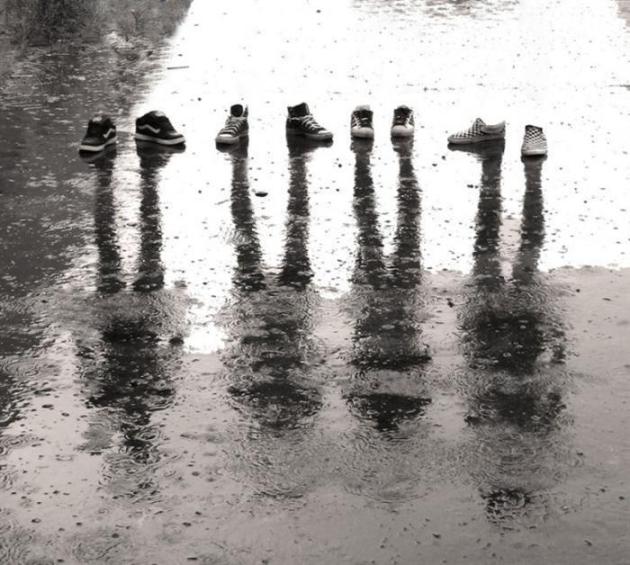Creativity, innovation, disruptive mindset, out-of-the box thinking have all made it to the modern day lexicon’s most popular words. You hear them on a daily basis from your boss, your colleagues, your teacher or from the road side vendor who may call it in his terms as Jugaad. It is a set phenomenon and that is growing exponentially by the day. Tomorrow you might see a job description on naukri.com or the Wednesday employment supplement of your newspaper, which reads- “Wanted Out-of-the-Box thinking individuals who have a disruptive mindset”. Not people who can write Java code, or who can tell you what is there in the rule book, but solution givers. Our education system makes us accept the solutions given, but does not encourage us to go in search of them. Often people who seek solutions are the ones who think disruptively and are said to be creative.
I recently had a chance to attend a Webinar of Puneet Bhatnagar, an advertisement professional and a creative person. No, not all advertisement professionals are creative. Have you watched this Idea commercial? I guess you have the answer. Puneet spoke on ideating- how do we generate ideas? What do we do with them? Is there any pattern or science to it? It was a very informative webinar. I wanted to share my learning with all my friends who din't have the good fortune of listening to Puneet.
Creative thinking is an art like Pranayama. Every living thing can breathe, but there are only a few who can breathe to increase their vital body energy. That is because they have practiced Pranayama. More fundamentally, one has to know that such a thing exists and can be practised. The history of human civilization is the history of human creativity and innovation and not to forget foolishness. We confused creativity with intelligence. Intelligence is applying known facts to solve a problem efficiently while creativity is thinking of newer and better answers to the problem. Not all intelligent people are creative but creative people are intelligent for they know what already exists. They are interested to find if there exists something which is better. Puneet gave the example of Google founders- Larry Page and Sergey Brin. When they started to build a search engine, Yahoo the market giant already had it in place. People used Yahoo search and thought this is the finest, although it returned search results for Sandalwood trees among other things when one searched for Bollywood. But Larry Page and Sergey Brin weren’t happy about the search results and asked- is there a better way to write the search algorithm? That was their Ph.D project.
The result as we know is history. Google became the quickest company to turn their founders into millionaires and today it is the most valued company in the world. Google in fact tried to buy Yahoo a few years ago, if you remember. This characteristic of creative people which Puneet explained is called Creative Dissatisfaction. If you aren't happy with something in your life, are you dissatisfied with it or are you creatively dissatisfied with it?
Q: How to be creatively dissatisfied?
A: By creative cribbing.
If you crib about a situation creatively, chances are you’ll strike on an answer which will do away with your dissatisfaction. The example of Google founders is the classic case of creative cribbing. They spent hundreds of hours using Yahoo search and to crib about its shortcomings. Through this they knew how to build their product. This technique can be used in all our daily lives where we encounter shortcomings and dissatisfaction. Lets crib about that in all ways thinkable. Are we able to find a solution? No? How about round 2?
Creativity comes with patience like most other things. Creative thoughts are refined. No person can land on a path breaking idea at the first moment he starts thinking. For beginners, all thoughts generated at first might be trash, or not usable, or not practical. Most of them give up at that moment and never go to round 2. But you need to go to round 2 like a trained boxer. If you have the habit of taking down notes, or keeping track of your thoughts by some means that is comfortable to you, it will be of great help. One must understand that sometimes it takes years to come to that defining idea. In the process you know the journey that you have made. You are now acquainted with a millions of tiny ideas that you have encountered which can be used elsewhere. You are now the most powerful person known to you.
The Indian Jugaad is now a respected methodology of optimizing the resources. Farmers, traders, hawkers, housewives use their jugaad to utilize the limited resources available to them to the maximum extent. Necessity as they say is the mother of all inventions. For ideas to come, you must ask yourself- Have I created a necessity for it? Does it help me or the society in general? Can I live with mediocrity?
May be answers to those questions have given you a few ideas to kick start. How about sharing them with me in the comments section and we can together use them as our magic carpet to fly into a better world.


No comments:
Post a Comment